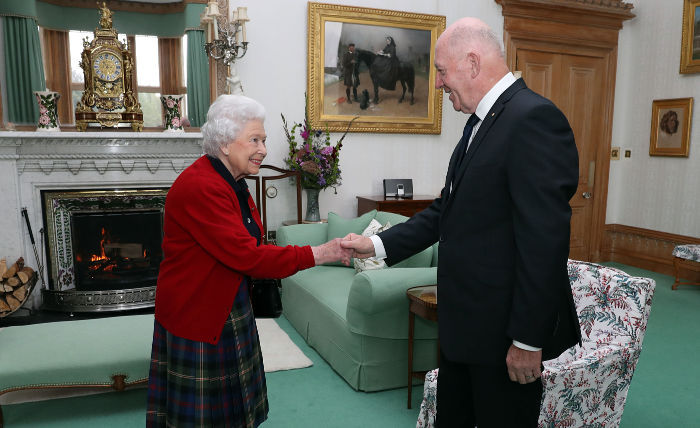Queen in name only? The powers Her Majesty has over Australia

Following the recent royal tour of Australia by the Duke and Duchess of Sussex, it seems that nationwide support for the royal family is riding high. But there is still a large proportion of the country who would like to see Australia become a republic.
Despite Australia becoming an independent nation following federation in 1901, the country remained part of the Commonwealth with the British monarch as the head of state. Her Majesty the Queen is still styled to this day as Queen of Australia, but do you know what powers the monarch actually possesses over her Australian subjects?
Constitutional monarchy
Australia is a constitutional monarchy, which means the Queen is not actually involved in the day-to-day running of the country, which falls upon the elected government, currently headed by Prime Minister Scott Morrison.
However, she continues to play an important ceremonial role as sovereign, with her official title when conducting royal duties down under being Elizabeth the Second, by the Grace of God Queen of Australia and Her other Realms and Territories, Head of the Commonwealth.

The role of the Governor-General
The Queen delegates her constitutional power to a representative in Australia, the Governor-General, who performs the same role in Australia that Queen Elizabeth II does in the United Kingdom. He or she is completely independent of the British government and is handed executive power to act on behalf of the sovereign in almost all respects.
Some of the duties carried out by the Governor-General in the name of the Queen include opening and dissolving the Australian Parliament, commissioning the prime minister and appointing other ministers after elections, giving assent to laws when they have passed through parliament and appointing federal judges, ambassadors and high commissioners to overseas countries.
The current Governor-General is Sir Peter Cosgrove who was appointed in 2014 and is expected to retire in March 2019, at the end of his five-year term. He resides at Government House in Canberra, but also has an official residence in Sydney’s Admiralty House.
As well as representing the Queen, the Governor-General also assumes the role of Commander-in-Chief of the Australian Defence Force, attending military parades and special occasions such as Anzac Day.
The Governor-General also entertains official visitors to Australia, which recently included the Duke and Duchess of Sussex, who stayed with Cosgrove and his wife, Lady Cosgrove, at Admiralty House during their official tour of Australia in October.
The Queen’s role
As a constitutional monarch, the Queen acts on the advice of the Australian Government which, along with the individual governments of each state and territory, is responsible for the day-to-day running and administration of the country. Along with being represented by the Governor-General at federal level, the Queen is also represented in each state by governors who are appointed on the advice of each premier.
While the Governor-General conducts much of the monarch’s constitutional duties, she has previously undertaken some ceremonial roles during her visits to Australia. For example, in 1954 the Queen opened Parliament in Canberra for the first time, wearing the same gown that she wore for her coronation in 1953.
The Queen is also patron of many Australian organisations, including The Royal Humane Society of Australasia, the Partially Blinded Soldiers’ Association of Australia, the Royal Children’s Hospital, Melbourne, the Scout Association of Australia and the Mothers’ Union in Australia. She also holds a number of titles in the Australian Armed Forces.

Visiting Australia
During her lengthy reign the Queen has made a total of 16 visits to Australia, the first of which she made in 1954, just one year after she was sworn in as Queen of the Commonwealth, having inherited the throne following the death of her father King George VI.
Her most recent visit was in 2011 when she and husband Prince Philip spent 10 days down under for the Commonwealth Heads of Government meeting. They visited Canberra, Brisbane, Melbourne and Perth.
In recent years younger members of the British royal family have assumed a more prominent role in official duties, with the Duke and Duchess of Cornwall visiting Australia in April to open the Commonwealth Games on the Queen’s behalf.
Signs and symbols
Just like in the United Kingdom, the Queen’s image features on all Australian coinage, as well as the five-dollar note.
Every state in Australia also celebrates the Queen’s birthday as a public holiday. Her birthday is also marked by the publication of a list of recipients of the Order of Australia and with a new commemorative stamp issued by Australia Post each year.








 Proudly Australian owned and operated
Proudly Australian owned and operated